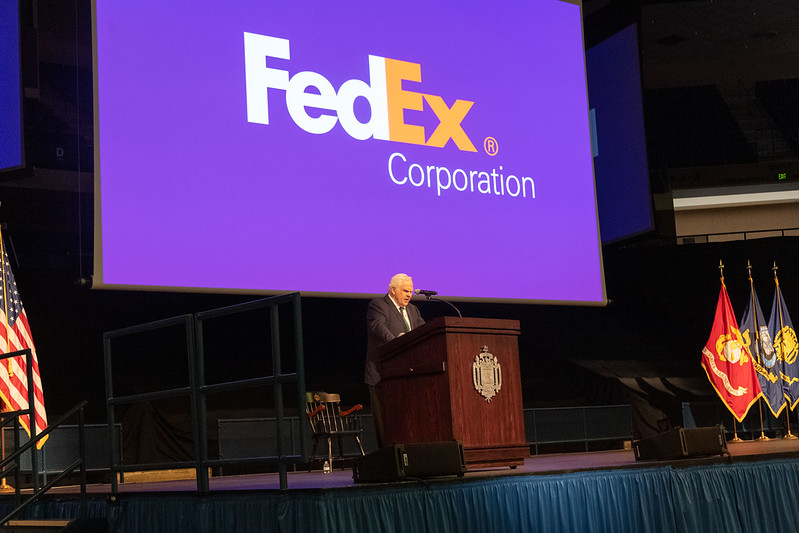
FedEx executives are streamlining the company’s operations to more closely resemble those of chief competitor, UPS. Esther Fung reports for The Wall Street Journal:
FedEx Corp. is combining its Express and Ground delivery units into a single business, abandoning an operating structure championed by founder Fred Smith and criticized by investors and analysts.
The changes are designed to simplify interactions with customers and accelerate cost-cutting efforts, FedEx Chief Executive Raj Subramaniam said. It helps the parcel-delivery giant adjust to a business model driven by e-commerce instead of one predominantly focused on business-to-business services, he said.
“There’s opportunity to continuously improve the efficiency of our operations,” said Mr. Subramaniam. “Our customers are going to see a difference.”
Shares of FedEx rose 2.2% in premarket trading Wednesday.
FedEx is grappling with a monthslong downturn in shipping demand and elevated operating expenses. The Memphis, Tenn.-based company is working to cut billions of dollars in expenses in the coming years. As of last May, the company had 412,770 U.S. employees, or about 75% of its total full- and part-time staff. It expects its U.S. head count to be down by roughly 25,000 by the end of May.
An activist investor, D.E. Shaw, last year pushed FedEx to make changes to its business and got two people added to the company’s board.
Mr. Subramaniam said the reorganization has the support of Mr. Smith and the company’s board.
Mr. Smith, who founded Federal Express Corp. in 1971 and long served as its CEO, has said that the company’s strength was in its business model, with each unit operating independently and having its own leadership team. That meant operating FedEx’s premium Express business, which often uses planes, and its less costly Ground business as separate networks to ensure that the time-sensitive overnight packages arrived on-time.
A surge in e-commerce shipments in recent years and higher costs associated with delivering packages to homes pushed the company to bring the operations closer together to avoid duplication. Previously, FedEx has dispatched Express and Ground trucks to move packages in the same neighborhoods, sometimes creating confusion for customers and extra costs for itself.
Customers, for now, have to compare Express’s and Ground’s pricing and dispatch windows separately for their business decisions. With one set of business rules to consult, customer support would improve, said FedEx Chief Customer Officer Brie Carere.
The new structure more closely resembles that of FedEx’s chief rival, United Parcel Service Inc., which has long run a single network to handle air and ground shipments. Unlike UPS, which has a unionized workforce of employees who make deliveries, FedEx will continue to rely on contractors to move goods to customers in addition to its employees.
Read more here.



